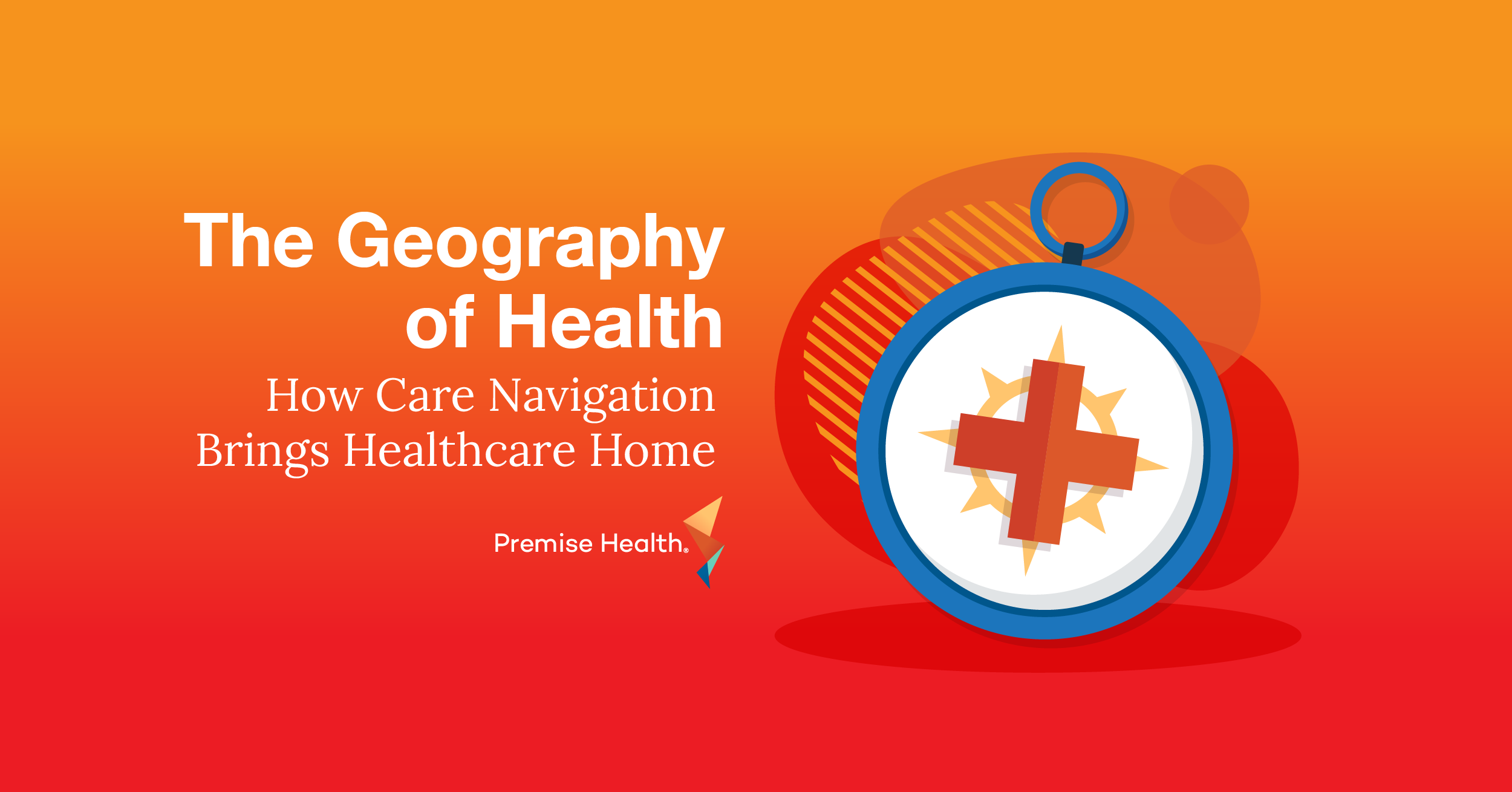Ask the Expert: Nutrition Challenges at Home and in the Office
A Conversation with Jessica Collet Murphy, Premise Health Wellness Coach
2020-2021 has been a stressful year. Between navigating a global pandemic, juggling working from home while caring for loved ones, casting votes in a presidential election, and the increasing calls for social justice, the news cycle has been taxing. As a result of those stressors, many adults have reported engaging in unhealthy eating behaviors to cope, such as overeating, skipping meals, or frequently indulging in foods high in added sugar and salt. While this may be a comforting quick fix, it can have long-term consequences, including increased risk for Type 2 diabetes, high blood pressure, and heart disease.
We sat down with Jessica Collet Murphy, a Premise Health wellness coach, to discuss alternative coping strategies for the stress our new environments may bring and what unique nutrition challenges people may face in the coming months.
When people are stressed, why is food a common comfort people turn to?
Food being a sense of comfort really stems from our childhoods. Think back to a time you hurt yourself, got shots at the doctor, or had a rough day at school. The caregiver in your home likely pulled out a cookie or ice cream to make you feel better, so from a young age people are exposed to the idea that their favorite foods, which are typically higher in fat, sugar, or salt, can make a stressful experience feel better.
In your day to day, there are stress triggers everywhere – work, home life, financial struggles, or even traffic. Amid those triggers, food is also everywhere and accessible through vending machines at work, the candy bowl at a colleague’s desk, and driving past fast-food chains during our commute. The accessibility makes it easier for you to grab those pick-me-up foods without having to think twice.
What are some alternative coping strategies people can use to not turn to food during stressful times?
It’s first important for someone to acknowledge they might be a stress eater. By acknowledging it, that allows them to start identifying the patterns to manage. If someone’s pattern is late night eating in front of the TV, they’ll want to think about how to switch up that routine. Consider going for a walk after dinner, putting on a podcast, or sitting down to read. All of these options disrupt the pattern of TV viewing and then eating.
Stress management is the key to finding alternative coping strategies, which will require some exploring as not all techniques work for everyone. That’s where wellness coaches can come in and help people find something that’s a good fit for their unique situation.
What nutrition challenges do people face in a work-from-home environment?
One challenge is having constant access to food at home, so I always recommend taking a good look at what foods are being brought in. Most people are going to be more drawn toward things like chips and candy instead of the apple in their fruit bowl. Avoid bringing “trigger foods” into the house and substitute them with healthier versions, such as buying bagged popcorn instead of greasy chips.
Stress is the driver behind comfort eating and working from home has unique stressors because there is no clear divide between work and home life. People are surrounded by family needs, children, virtual learning, and their own work responsibilities, so it’s extremely important to designate a clear workspace that is separated from the kitchen environment and other distractions that may fuel stress and lead to mindless eating.
To help with the stress of working at home, try getting out of the house to do something active before or after your workday. It’s a great stress reliever and can create a healthy balance in your day.
What nutrition challenges do employees in the office face?
People with long commutes typically have less time in the mornings to prepare lunch and often have less time in the evenings for dinner prep. Being able to tackle those challenges starts first and foremost with time management. A great solution is meal planning and prepping. Designate time to map out the week, purchase groceries, and do small meal prep, such as chopping veggies so they’re easy to grab and cook. Online grocery shopping is another great way to save time, and it also eliminates the temptation of being in the store and making impulse purchases, like candy at the register.
Bringing food to work can be helpful because it makes you less inclined to eat out. It’s okay to step out and eat with colleagues on occasion – it’s a wonderful way to build relationships. However, it is important you take charge of what you’re eating. Going out to eat means you’re putting the control in someone else’s hands, making it more likely you’ll eat salt, fat, and sugar, because those ingredients make food taste great to ensure sales at restaurants. Consider bringing in your own healthy snacks and keeping them at your desk as an alternative to vending machine options.
What types of foods are good to pack for the office?
Building healthy and nutritious meals is not as hard as you think! The best approach to meal and snack planning is to keep them satisfying, which means a balance and variety of foods. At work, I recommend eating things rich in fiber, protein, and heart healthy fats as they keep you full longer compared to highly processed foods.
For snacks, pairing a healthy carb with a protein source will keep you full and focused in the office. Some of my favorites are crackers with peanut butter or almonds and berries.
Are there foods people should avoid eating during their workday?
The most important is avoiding foods with added sugars. They can give you a temporary energy boost, but you’ll soon “crash” as your body responds to the sugar. It’s also important to be mindful of caffeine intake. The later you consume caffeine, the more of an impact it will have on your ability to get good sleep. Not enough sleep on a consistent basis will fuel stress that could result in comfort eating. When you’re tired, it’s also easier to reach for sugary foods to perk you up.
If you have a dip in energy, check in with yourself. Is it hunger? Stress? If you can’t decide, always start with water. Mild dehydration can cause energy levels to drop, and you will be surprised how drinking water can make you feel better.
What can employers do to help encourage healthy eating in the workplace?
It depends on what food services they have onsite. If they’re able, employers can engage with their vendor to make healthier options available in vending machines, like introducing trail mixes, subbing in popcorn or baked chips, and adding more water instead of sodas. Onsite cafeterias or restaurants should also be encouraged to offer healthy options every day.
I’ve also seen a lot of success when employers make the idea of healthy eating fun and engaging. They can offer onsite cooking demos, start fun challenges, or even invite local farmers to set up once a month for an onsite farmers market. Creating an environment that demonstrates to employees that you are buying into their health and want to support them can make a big difference.
How do Premise wellness coaches approach nutrition?
Our wellness coaches offer support based on general recommendations for healthy eating. Coaches are there to help members recognize where they may be falling short on choices and empower them to decide what they want to take charge of. Our approach is very process focused. For example, if a member’s goal is to lose weight, we are going to support them with a step-by-step action plan that identifies the process of change to get there.
Outside of wellness coaches, our members can also work with registered dietitians who will look at the individual’s approach to eating and create a tailored action plan for them. That plan can include counseling, medical nutrition therapy, unique meal plans, or just simple education of how to read food labels and make informed decisions. Everything we do is very member-centered, which is why I think it’s such a successful and beneficial product for employers to consider.
At Premise Health, we emphasize a whole person approach, keeping our healthy members on track and providing guidance to those who need a little extra help. Making healthier choices and changing behaviors is foundational to our approach to medical care and disease prevention, which is why our wellness programs focus on managing nutrition, stress, physical activity, and relationships. Click here to learn more about how our wellness product can create a thriving organization where members get and stay well.
Next on industry insights.

The Geography of Health: How Care Navigation Brings Healthcare Home
Read the Blog
Why Payers Need Advanced Primary Care
Read the Blog